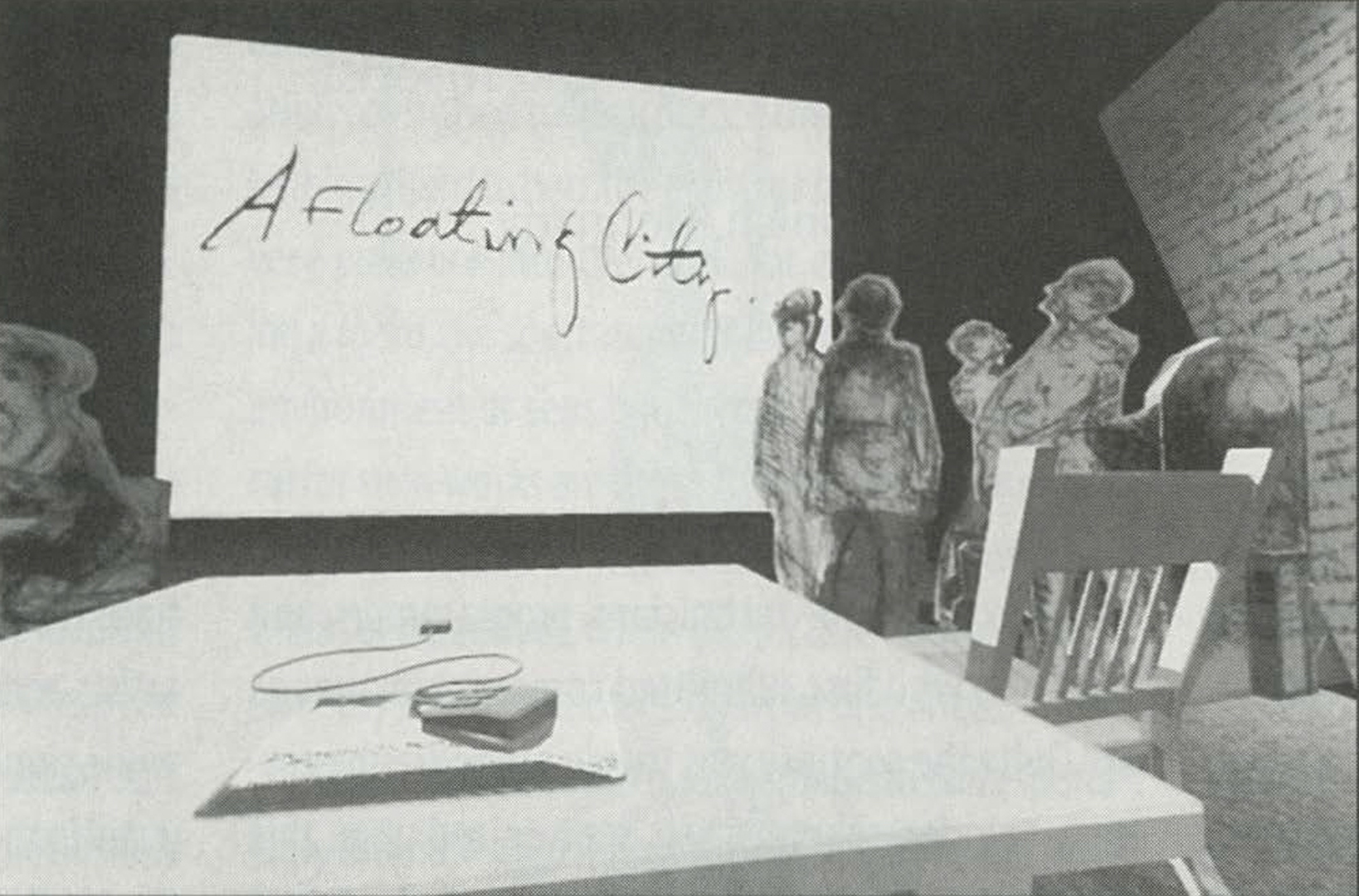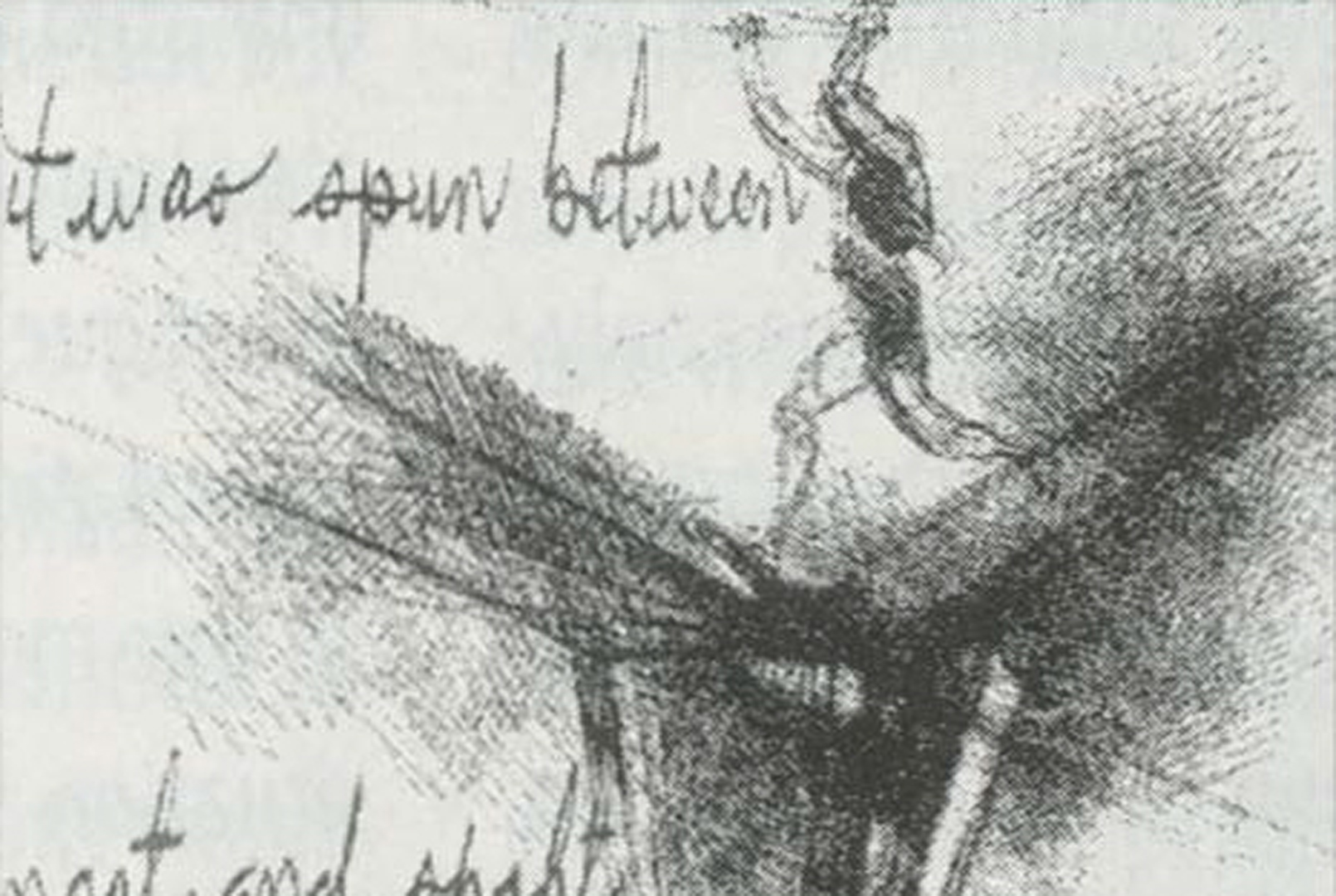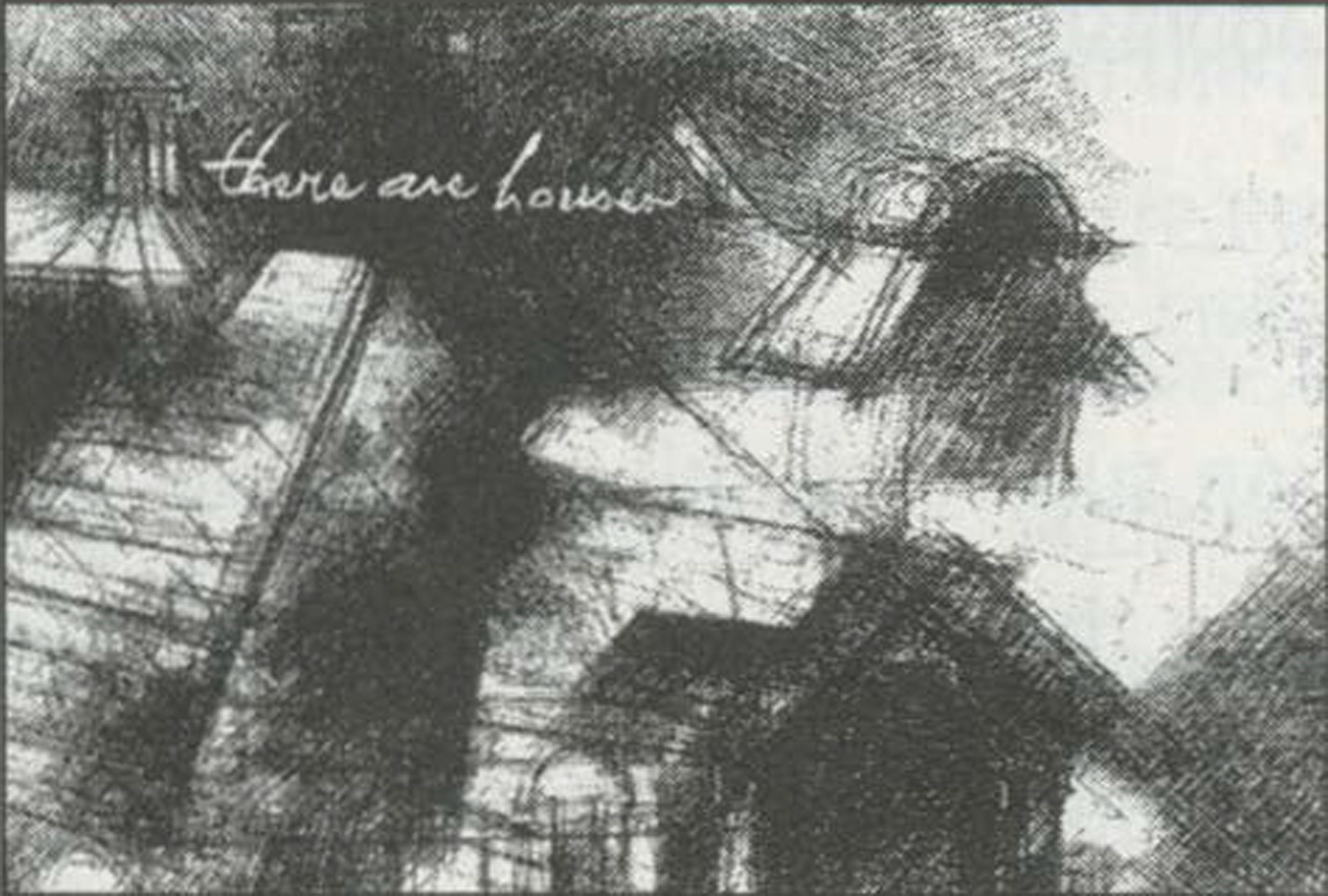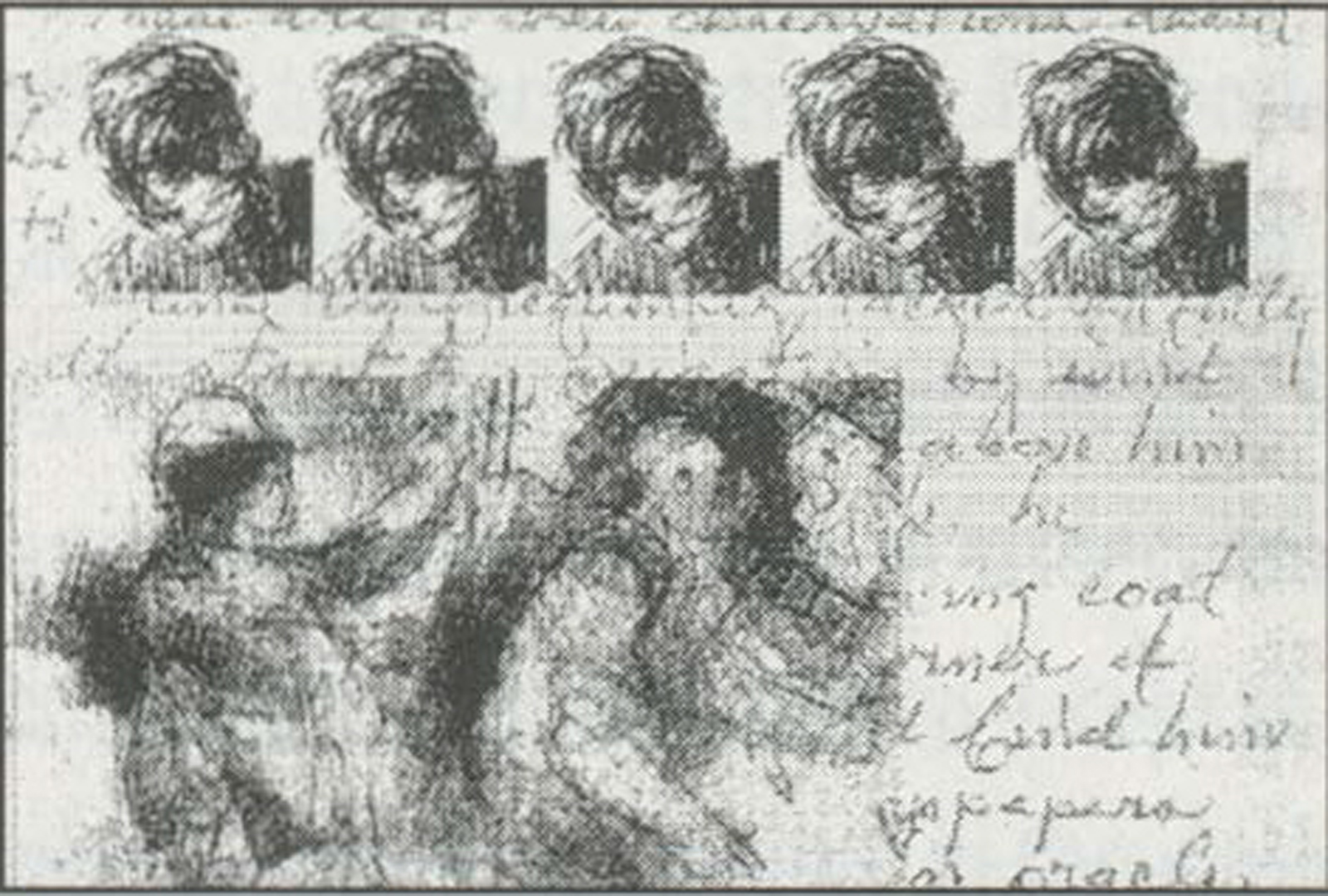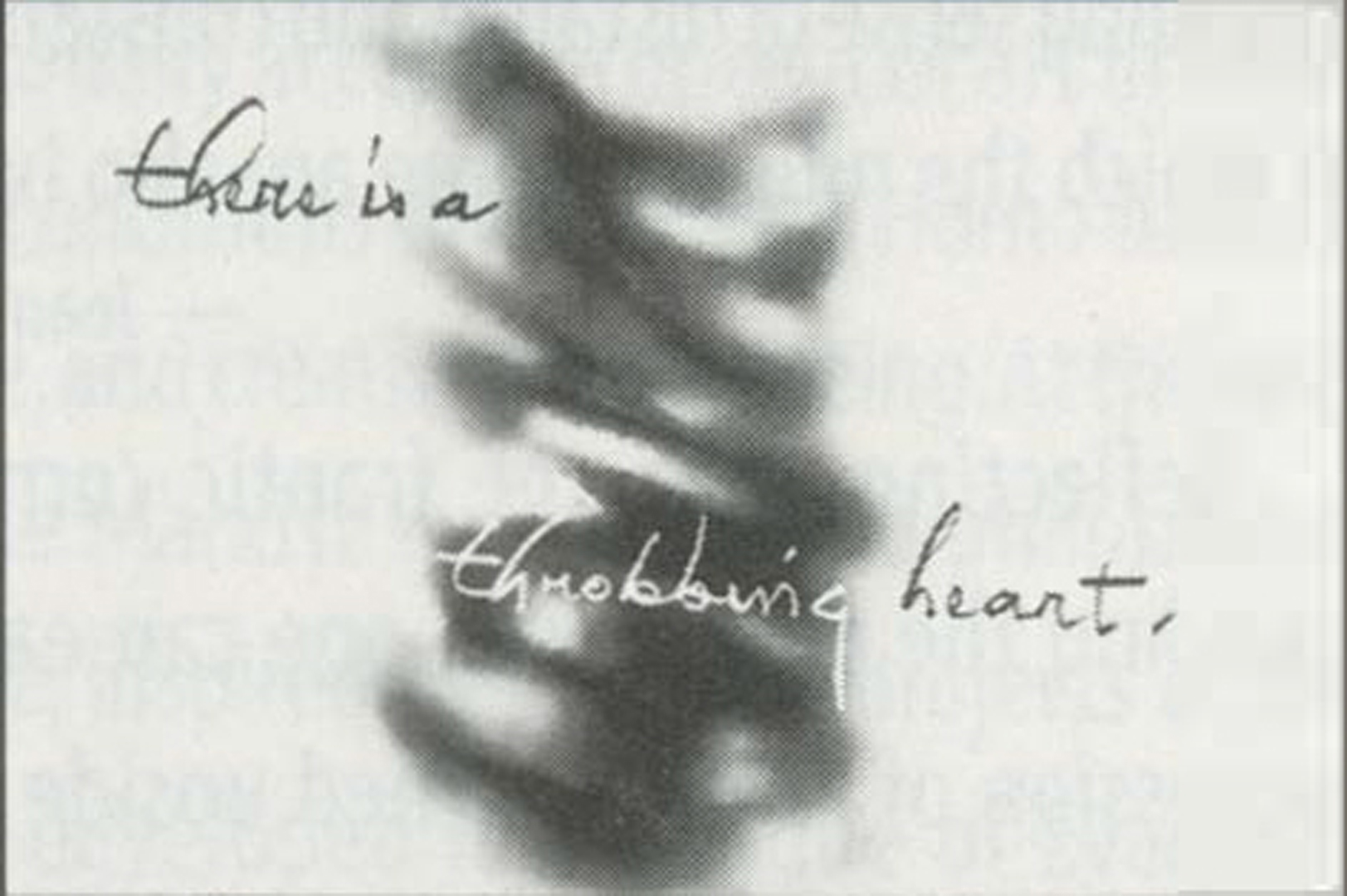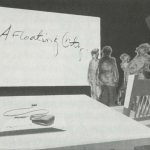Alan Stacell, Ed Cunnius, Elnor Kinsella, Susan Kirchman, Jeff Raymond: Bentlow Stairs: An Electronic Artist’s Book
Artist(s):
Title:
- Bentlow Stairs: An Electronic Artist's Book
Exhibition:
Category:
Artist Statement:
Our work is an illustrated hypertext about a seagoing city called Bentlow Stairs. Bentlow Stairs is like all cities, a never finished, giant machine where people live, work, and dream. Unlike other cities, Bentlow Stairs is adrift – it is a massive floating steel lattice, free to roam the world’s oceans. The book listens in on the inhabitants of the city as they consider themselves and the place they are building. Bentlow Stairs is about the culture and character of these people, and about the philosophy behind the making of all cities – even fantastic ones that float on the sea.
The story is told via electronically composited images and text that are presented as frames in the KMS hypertext system. The direction and flow of the book are controlled by the viewer using a mouse to select links. The illustrated fiction of the book consists of bit-mapped images overlaid with invisible link fields. These fields are made visible only when the cursor touches them; each frame contains from one to as many as six links. By scanning the screen with a mouse, the viewer can determine which elements are associated with a link and then choose whether or not to follow the link to pursue a particular story line. Some links are associated with words, others are associated with visual elements such as buildings or characters. Bentlow Stairs consists of more than 250 frames. Since the hypertext is a collaboration among several artists, a system was needed that supported multiple authorship; with KMS we could all work on the same set of frames simultaneously from multiple workstations.
Bentlow Stairs is presented within the context of an installation. The installation consists of large printouts of drawings, text, and characters from the book mounted on eight-foot panels. These panels are cut into different shapes and arranged around a small white wooden table and three chairs. On the table, there is a three-button optical mouse and mouse pad. Suspended in front of the table is a large screen where the frames are projected. The installation provides an environment within which viewers can interact with the book in a way that is more engaging than is possible with a desktop display. Everything seen and heard – including the other participants in the space – is a part of the mimesis. As such, the installation is an architectural connection between the viewer and the virtual city.
Bentlow Stairs’ matrix of interconnected frames mirrors its structure and the relationships of its people. It invites the viewer to move through the metaphor of the city through a series of invisible doors. Each person who navigates through the hypertext assembles a different concept of the city, much like driving the streets of a strange town. Each person who reads the book can have a different experience. This “hyperspace” creates the sensation of moving through the piece, following trails that slowly build a large illustrated poem. It is this crafting and navigation of browsable trails through visual information that is central to the hypertext phenomenon. The structure of the hypertext is the heart of Bentlow Stairs; the individual images are the hinges in its web.
Our initial awareness of “working with a computer” has faded. As a tool, it is more familiar to us now than our old ways of making art. We take for granted that this device can do what it can do, and we are restless to make things with it. Bentlow Stairs is one result of that impulse, and it has been the one that has challenged us the most. By focusing on the phenomenology of hypertext, we work with only a small part of the art – making potential of computers. However, in using this rather simple information handling concept, we have had to think as painters, filmmakers, poets, and story tellers.We have attempted to build interactive narratives that can semantically flex and be retold by the viewer as he or she navigates the hypertext.

